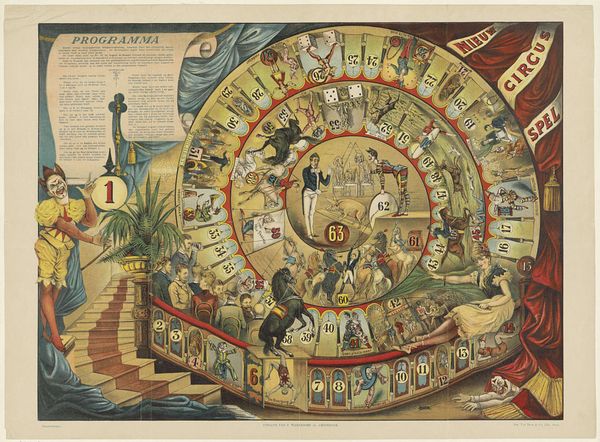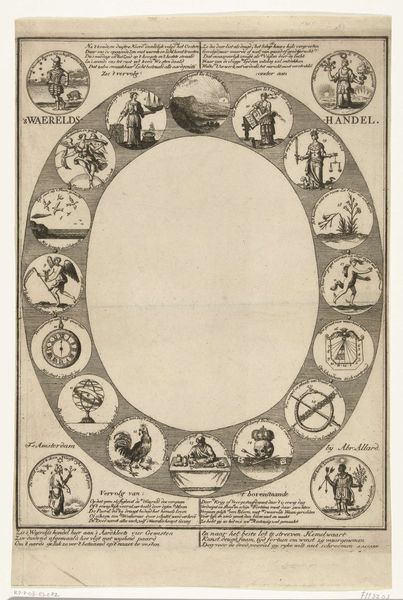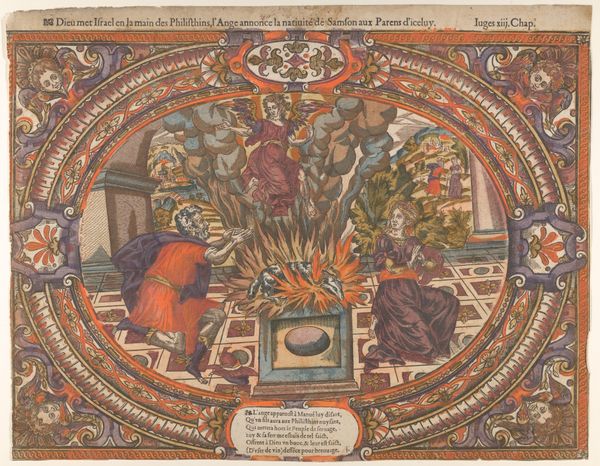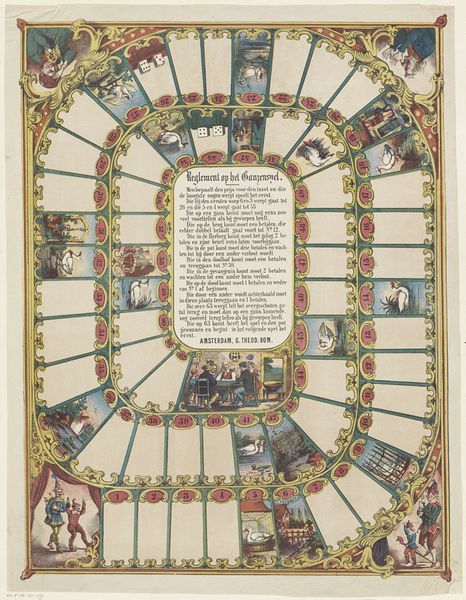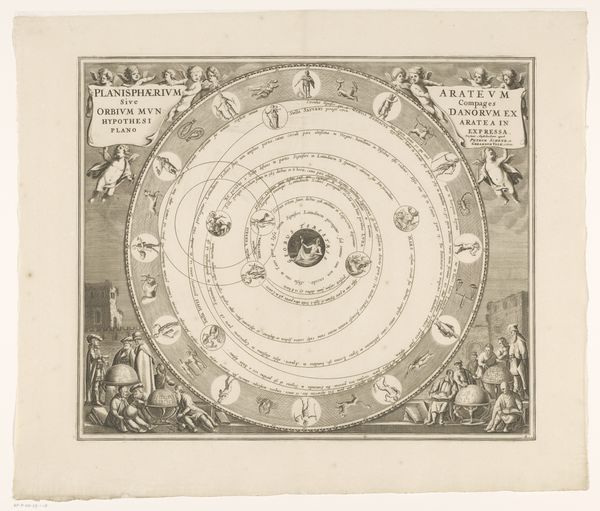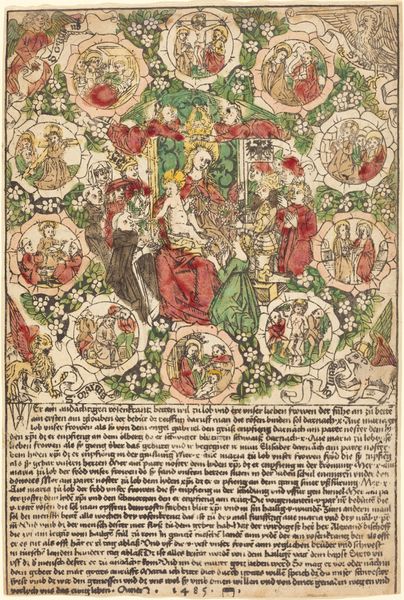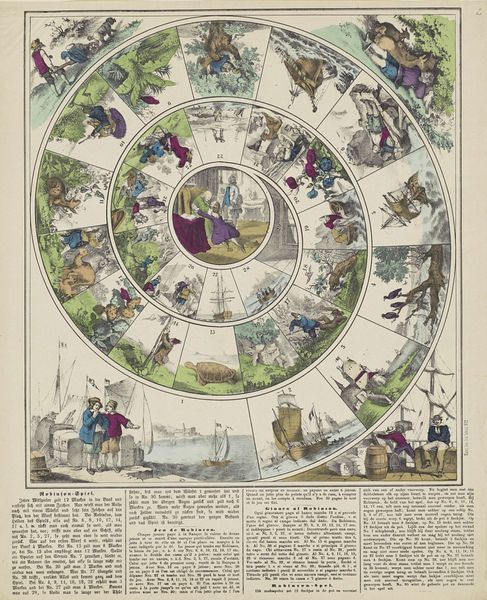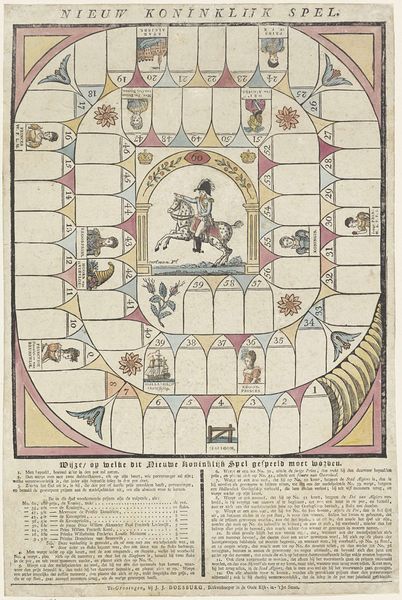
The Seven Deadly Sins and the Four Last Things (tabletop) 1485
0:00
0:00
hieronymusbosch
Museo del Prado, Madrid, Spain
oil-paint
#
allegories
#
allegory
#
oil-paint
#
landscape
#
oil painting
#
vanitas
#
christianity
#
northern-renaissance
#
miniature
#
christ
Dimensions: 150 x 120 cm
Copyright: Public domain
Curator: Hieronymus Bosch's "The Seven Deadly Sins and the Four Last Things," painted around 1485, presents a stark vision. I'm struck by the way it combines these weighty themes within such a precise circular format. Editor: Immediately, I notice the grim, almost theatrical quality of it. The miniature scenes feel crammed with detail and invite intense scrutiny, a bit overwhelming really. Curator: Precisely! The table-top format was meant to encourage this up-close contemplation, demanding a kind of personal moral audit. Bosch deploys oil paint meticulously to craft scenes of everyday life alongside images of hell and salvation. What do you make of this interplay? Editor: It’s about societal reflection, I think. These sins weren’t abstract—they were deeply embedded in social practice. This painting shows the culture war being waged. It served a strong social function. Did the Church commission it, do we know? Curator: Scholars debate the commission. It may well have been intended for a private patron—perhaps a wealthy merchant or cleric—allowing for a degree of iconographic liberty. Regardless, the material craft is undeniable: see how the artist deploys colour so brilliantly in illustrating how sin spreads everywhere in culture. How each segment contains distinct activities and the texture! Editor: I do. The intense level of detail throughout, however, pulls us into the darker side of human impulses—look at how each sin plays out within specific socio-economic realities of the time. Also I think how such items would be put into daily functions and habits, influencing perspectives on what might be called the dark sides of man, but also it made conversations start in families as they contemplated the lessons and moral positions to have within it. Curator: It also connects to vanitas themes. A reminder about how transitory everything is. Also the technical ingenuity—consider the preparation of the wood panel itself and the labour that took! Editor: That's right. It forces one to remember what's most important, and not fall prey to what's happening in that wheel—almost the circle of life and our daily habits and routines. A tool of its time that has survived the test of time itself. It remains an object in our current societal structure. Curator: Well, that brings a different perspective, allowing us to see the work as a challenge, demanding constant reflection, with a great purpose for how people can relate to what the artwork itself represents! Editor: I suppose it helps put things in perspective as the painting makes a statement, it helps create perspectives, in our lives even today.
Comments
No comments
Be the first to comment and join the conversation on the ultimate creative platform.
